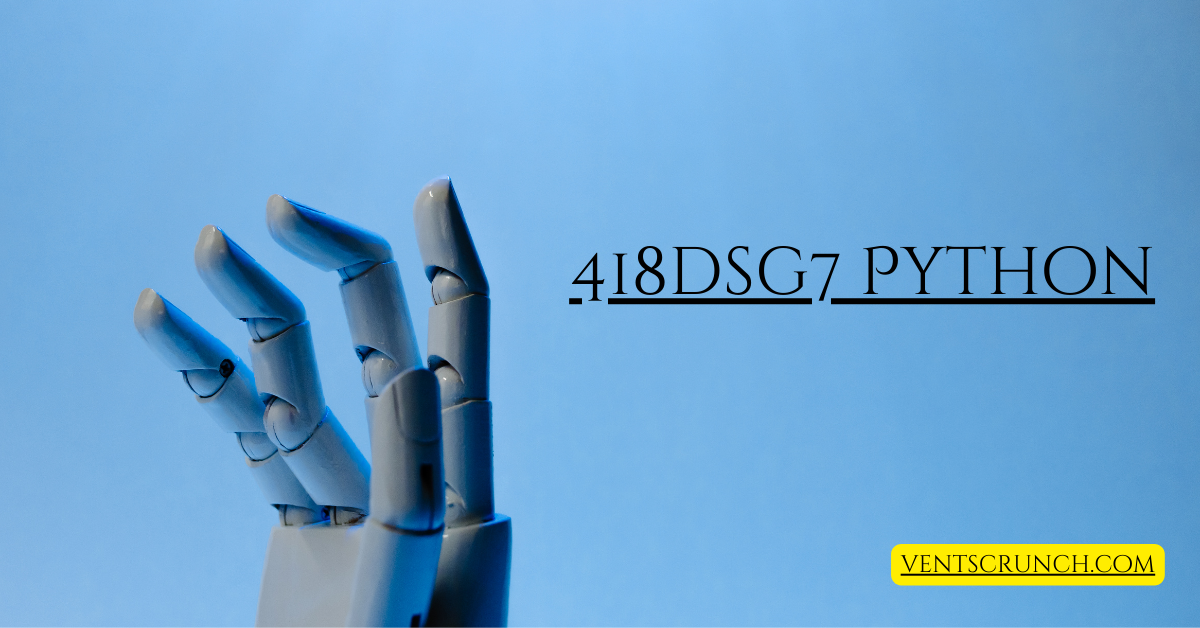418dsg7 Python Explained: Optimizing Graph Algorithms and Network Analysis
Python 418dsg7 module offers developers a powerful set of tools for handling complex data structures and algorithms. This specialized library has gained attention for its efficient implementation of graph-based operations and memory management capabilities. For programmers working with large-scale applications, the 418dsg7 module streamlines data processing tasks while maintaining optimal performance. It’s particularly useful in scenarios requiring advanced data manipulation, pattern matching, and network analysis.
418dsg7 Python: High-Performance Graph Analytics & Network Analysis
Graphs play a crucial role in data science, machine learning, and network analysis. They help in solving problems related to social networks, recommendation systems, and large-scale data processing. Python provides powerful tools and libraries for handling complex graph structures efficiently. In this blog post, we will explore high-performance graph analytics and data processing in Python. We will discuss various graph algorithms, scalable frameworks, and real-world applications. By the end, you will understand how to use Python for graph database management, real-time graph processing, and network analysis.
Key Features and Capabilities
The 418dsg7 Python module stands out due to its comprehensive suite of functionalities:
Enhanced Data Handling
It allows developers to manage large datasets more effectively by introducing optimized methods for data parsing, cleaning, and transformation.
Modular Design
Its modular nature lets developers integrate specific functions into existing projects without significant overhauls.
Built-in Debugging Tools
Debugging is simplified through advanced tools that provide real-time error detection and intelligent suggestions.
Graph Processing
The module’s efficient implementation of graph-based operations facilitates complex data structure management, essential for applications requiring advanced data manipulation and network analysis.
Implementing Graph Algorithms in Python
Shortest Path Algorithm in Python
The shortest path algorithm helps in finding the most efficient route in a network. Python provides Dijkstra’s algorithm, A* search, and Floyd-Warshall algorithm for such tasks. These algorithms are useful in transportation networks, logistics, and social media analysis.
Graph Traversal Algorithms
Graph traversal algorithms like Depth-First Search (DFS) and Breadth-First Search (BFS) are essential in artificial intelligence and network security. Python’s built-in libraries simplify their implementation. These algorithms form the backbone of real-time data streaming in Python.
PageRank Algorithm for Network Analysis
PageRank is a powerful algorithm used in search engines and ranking systems. Python graph analytics tools provide easy implementations of PageRank. It helps in evaluating the importance of web pages, users in social networks, and other ranking-based applications.
Building Applications with 418dsg7
The versatility of 418dsg7 Python makes it suitable for a plethora of applications.
Common Use Cases
From data-intensive research projects to real-time analytics, the module’s capabilities cater to diverse programming needs.
Performance Optimization Tips
To harness its full potential, developers can leverage features like memory management, threading configuration, and data structure optimization.
Future of Graph Processing in Python
Advancements in Python Graph Frameworks
With the rise of artificial intelligence, Python graph frameworks are becoming more powerful. Deep learning with graphs is gaining traction for complex pattern recognition. Researchers are integrating graph-based AI models with existing machine learning systems.
Scalability and Real-Time Graph Processing
The demand for real-time graph processing is increasing across industries. Python provides advanced solutions for handling massive datasets efficiently. Scalable graph processing ensures quick decision-making in dynamic environments.
The Role of Graphs in Big Data and AI
Big data graph analytics is revolutionizing industries like healthcare, finance, and cybersecurity. Python’s ecosystem supports parallel computing and cloud-based graph solutions. The future of graph processing will involve deeper integration with AI-driven applications.
FAQs
What is the 418dsg7 Python module used for?
The 418dsg7 module is designed for high-performance graph analytics, data processing, and network analysis in Python.
How does 418dsg7 improve graph processing efficiency?
It optimizes memory management, supports real-time processing, and includes advanced graph algorithms for efficient data handling.
Can 418dsg7 be used for machine learning applications?
Yes, it supports deep learning with graphs, making it useful for pattern recognition, recommendation systems, and AI-driven applications.
What are some common use cases of the 418dsg7 module?
It is widely used in social network analysis, logistics, search engine ranking, and cybersecurity.
Does 418dsg7 support real-time graph analytics?
Yes, it is designed for real-time analytics, making it ideal for dynamic data environments like fraud detection and network monitoring.
In Short
The 418dsg7 Python module is a powerful tool for high-performance graph analytics, network analysis, and data processing. With its efficient memory management, advanced graph algorithms, and real-time capabilities, it is a valuable asset for developers, data scientists, and AI researchers. As graph-based computing continues to grow, 418dsg7 remains a key player in scalable and intelligent data processing.
Stay Connected: Ventscrunch.com






